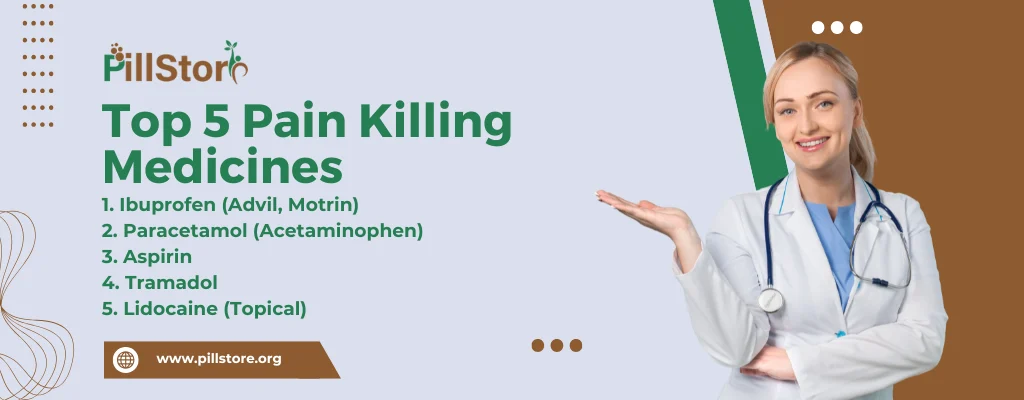Pain is an unavoidable part of life, but modern medicine offers a range of effective solutions to alleviate it. Pain Killing medicines, also known as analgesics, provide relief from mild discomfort to severe pain. This guide explores the top 5 painkillers for quick relief, detailing how they work, their uses, benefits, side effects, and important precautions.
Painkillers work by targeting the nervous system to reduce the sensation of pain. They achieve this through one of the following mechanisms:

Work: Ibuprofen is an NSAID that reduces inflammation, swelling, and pain by inhibiting the production of prostaglandins.
Uses:
Benefits:
Side Effects:
Important Information: Always take ibuprofen with food or milk to minimize stomach irritation. Avoid it if you have a history of ulcers or kidney issues.
Work: Paracetamol works by blocking pain messages in the brain and regulating body temperature.
Uses:
Benefits:
Side Effects:
Important Information: Adhere strictly to the recommended dose. Do not combine with alcohol to avoid liver toxicity.
Work: Aspirin is another NSAID that relieves pain by reducing inflammation and thinning the blood.
Uses:
Benefits:
Side Effects:
Important Information: Avoid in children under 16 due to the risk of Reye’s syndrome, a rare but serious condition.
Work: Tramadol is a synthetic opioid that modifies the brain’s perception of pain by binding to opioid receptors.
Uses:
Benefits:
Side Effects:
Important Information: Use only under medical supervision. Avoid combining with alcohol or sedatives to prevent dangerous respiratory depression.
Work: Lidocaine numbs specific areas by blocking nerve signals in the skin.
Uses:
Benefits:
Side Effects:
Important Information: Use only as directed and avoid applying to broken skin or large body areas.
While beneficial, painkillers come with potential side effects:
Recognizing these risks is essential for safe use. Always follow medical advice and report any unusual symptoms to your healthcare provider.
Nonsteroidal anti-inflammatory drugs are an efficient medical remedy to eliminate pain, from low levels to critical ones. The patient increases their chances of making good choices on how they use the products by being aware of the benefits as well as the side effects that may result from using the products. And when it is tramadol, it is a painkiller which is a hope of getting quick help when you have a session of headache and cannot get to the hospital.
Nevertheless, safety is the call as long as the network is to be used appropriately. It is highly recommended that you should always seek the services of a healthcare provider in treatment. In this way, it becomes possible to control pain successfully in managing the disorders with the least adverse effects possible.


Hello! We now offer bank payments. Send a message here to open your WhatsApp to know how!